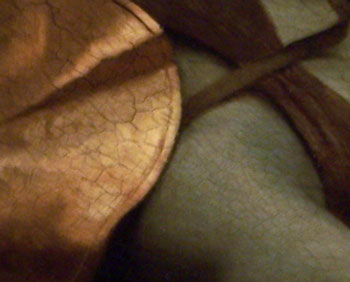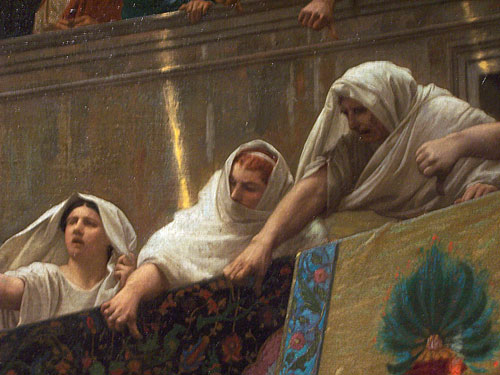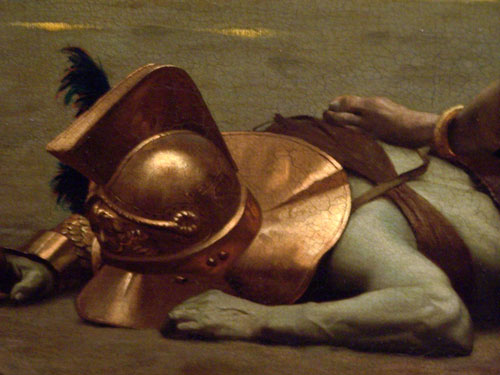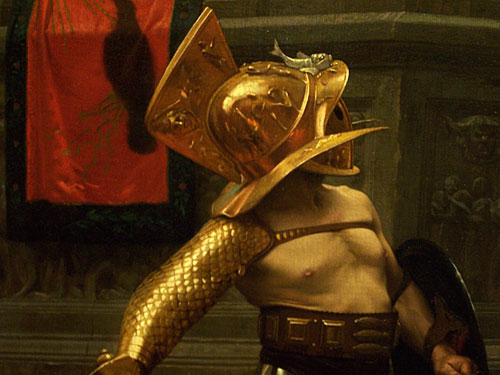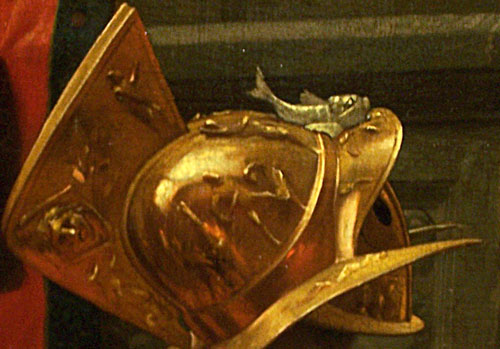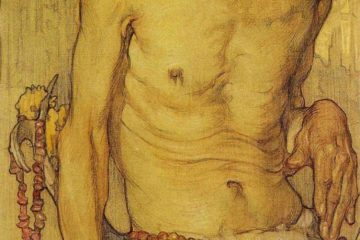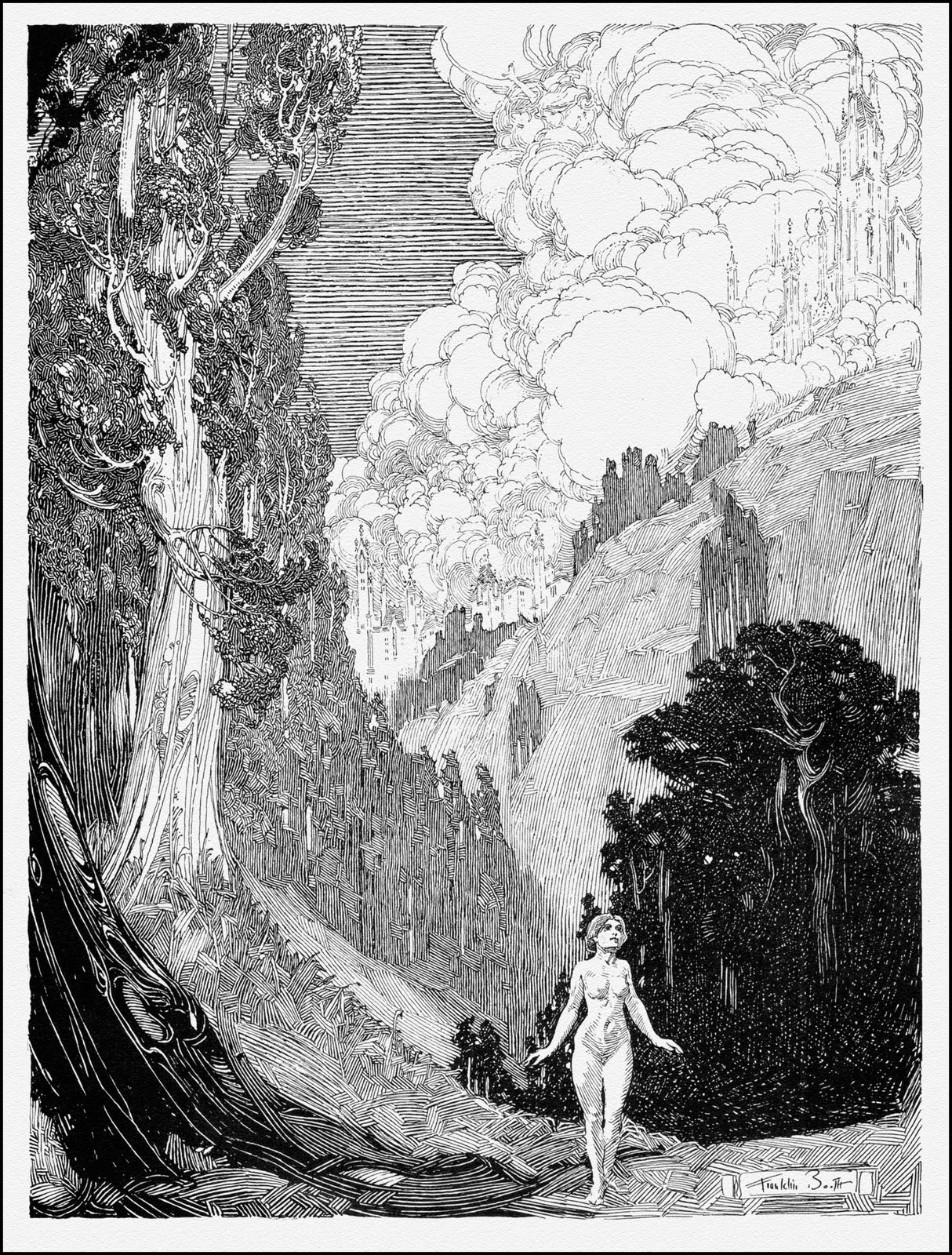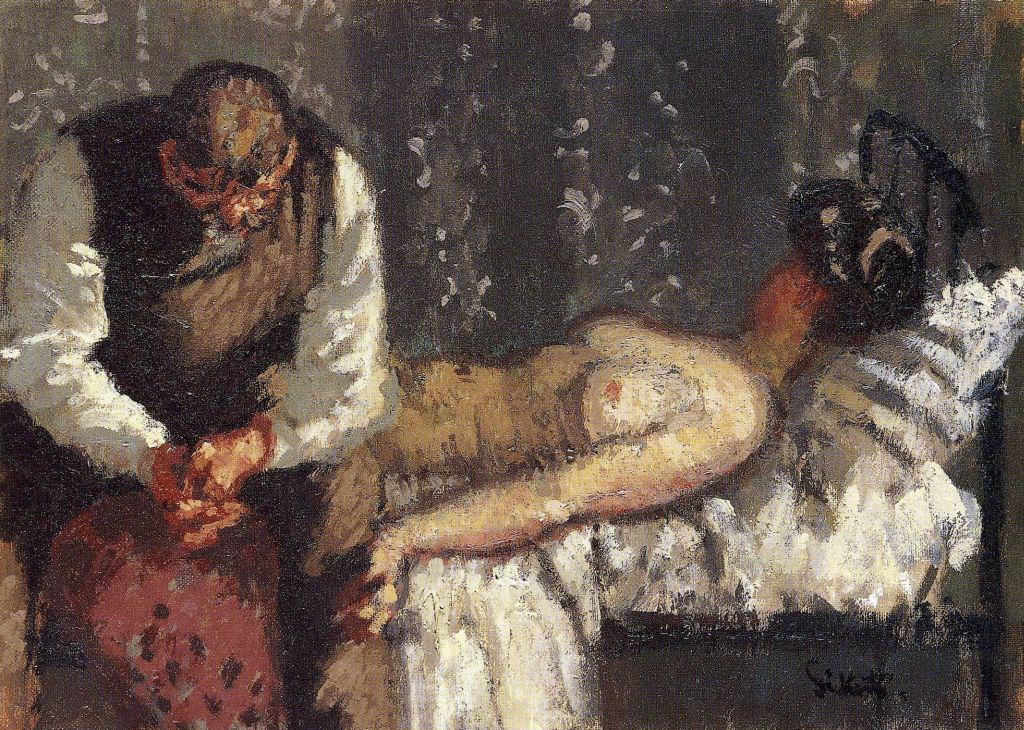I don’t get to art museums and galleries enough, but it can really give you a different impression of a piece of art. In this case, last week I was at the Phoenix Art Museum and saw the piece here, Pollice Verso (Thumbs Down) by Jean Leon Gerome (oil, 1872, 38″ x 59″).
First off, I do like the piece overall. I think it has a good use of color, a very nice balance in composition and a good use of the light and dark shades to create a good contrast. But I’ve always been a big fan of really detailed paintings, and this one offers that up by the boatload. Even with the smaller image above of the full version, you can see where Gerome spent alot of time creating a detailed, realistic scene.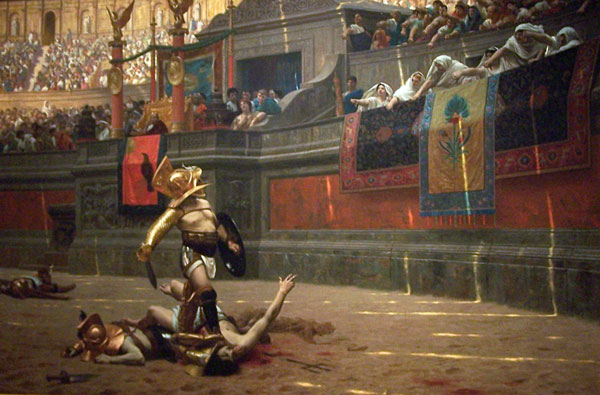
In real life, in the art museum, you get to appreciate that detail far more than you can in a small 600 pixel wide image on the screen, or even a 4 inch wide version in a book. When you can stand in front of a piece that’s almost five feet across in front of you, you can see details that you could never see in the book.
At the bottom of the page here I’ve tried to give you an idea of some of the details you miss normally. You see the intricate design of the victor’s arm mesh. You see the representative designs on the gladiators’ helmets, very difficult to see in the full image onscreen. You can see the humanity in the crowd, the the lack thereof of those who deciding the fate of those in the arena. You also get to see history, and not just what’s represented.
When you are at a museum looking at a piece, more often than not you can literally put your nose inches away from the painting. You get to see the age in the painting, the cracks that are obvious in the coppery helmet of the man on the ground, and those less obvious on his skin.
You can also see the artist’s individual, painstaking brushstrokes, and you realize that he stood in front of this very painting 136 years ago and put that brush on the canvas. The curve of the paint swath, the gentle rise and fall of the texture in the paint still visible after a century, and then you see history itself, alive right in front of you, you see that it’s not just a picture, but something a person laid to canvas in another time.
Opinions?
Russ
